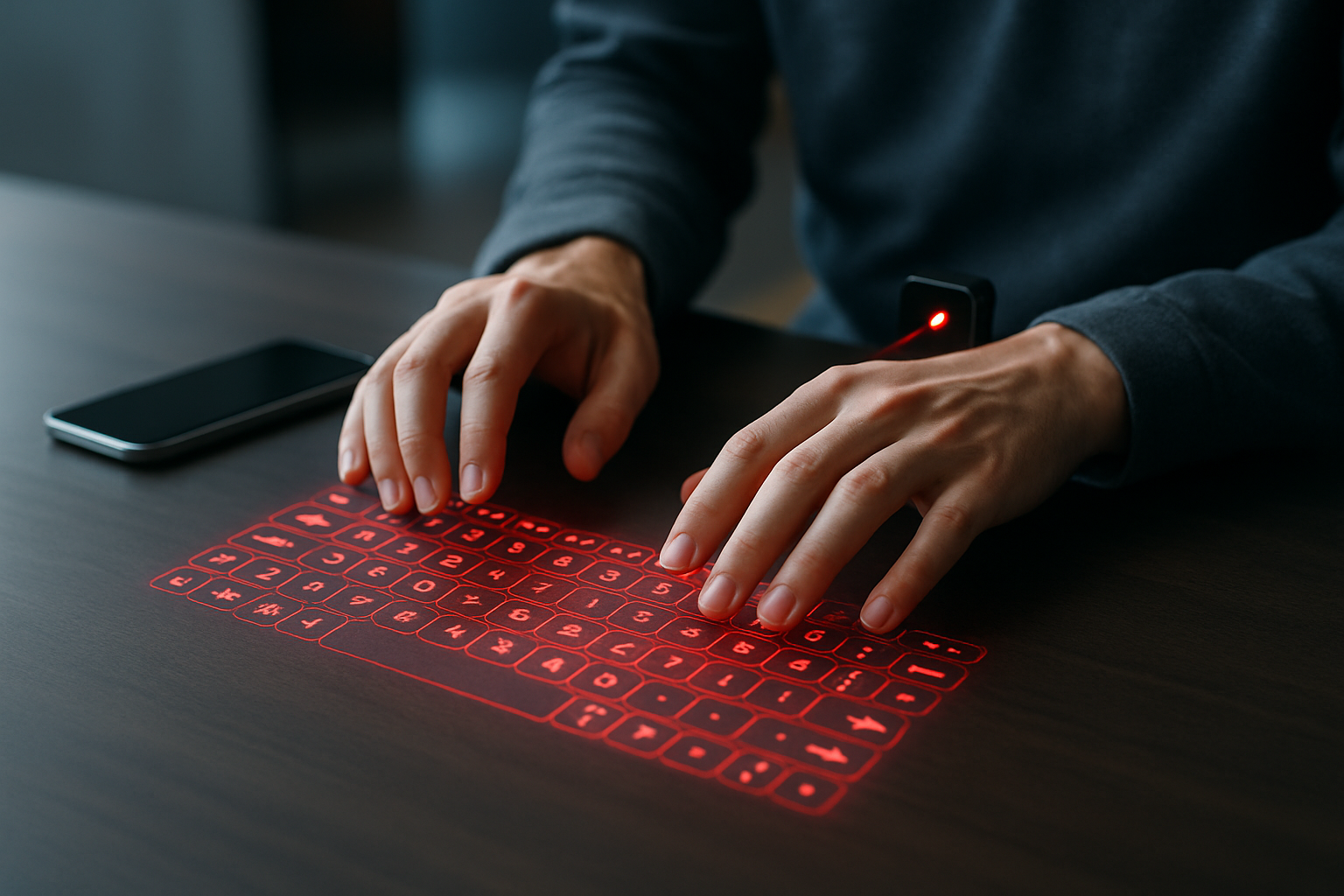Holographic Keyboards: The Next Frontier in Typing
In a world where technology continues to push boundaries, holographic keyboards are emerging as a futuristic solution to our typing needs. These ethereal input devices project a virtual keyboard onto any flat surface, allowing users to type without physical keys. As we delve into this cutting-edge technology, we'll explore its potential to revolutionize how we interact with our devices and the challenges it faces in becoming a mainstream input method.

How Holographic Keyboards Work
At their core, holographic keyboards use a combination of lasers and sensors to create and interpret user input. A projector casts the image of a keyboard onto a flat surface, while infrared sensors detect the position of the user’s fingers. When a finger “presses” a key, the system registers the input and sends it to the connected device.
This technology relies on precise calibration and sophisticated algorithms to differentiate between intentional keystrokes and accidental movements. The result is a typing experience that, while different from traditional keyboards, can be surprisingly intuitive for tech-savvy users.
The Advantages of Going Virtual
Holographic keyboards offer several potential benefits over their physical counterparts. Perhaps the most obvious is portability – when not in use, these keyboards disappear entirely, making them ideal for mobile devices. This space-saving feature could be particularly valuable in scenarios where desk real estate is at a premium.
Additionally, holographic keyboards are inherently customizable. Users can potentially adjust the size, layout, and even the language of their keyboard with a few taps. This flexibility could make them an attractive option for multilingual users or those with specific ergonomic needs.
Challenges and Limitations
Despite their futuristic appeal, holographic keyboards face several hurdles in their quest for widespread adoption. The lack of tactile feedback is a significant obstacle, as many users rely on the physical sensation of keys to type accurately. Some manufacturers have experimented with haptic feedback systems to address this issue, but replicating the feel of a physical keyboard remains challenging.
Another concern is the reliance on a flat, stable surface. While this might not be an issue in office environments, it could limit the usefulness of holographic keyboards in more dynamic settings. Environmental factors such as ambient light can also affect the visibility and performance of projected keyboards.
The Market Landscape
Several companies have introduced holographic keyboard products, with prices ranging from $100 to $300 for consumer-grade devices. However, adoption has been limited, with many users viewing them as novelty items rather than serious productivity tools. The technology has found some niche applications in medical settings, where the lack of physical surfaces can help maintain sterility.
As the technology matures, industry analysts predict that the holographic keyboard market could grow significantly. Some estimates suggest the market could reach $4.5 billion by 2026, driven by advancements in projection technology and increasing demand for compact, versatile input devices.
The Future of Typing
While holographic keyboards may not replace traditional input methods entirely, they represent an intriguing step towards more flexible and adaptive computing interfaces. As the technology improves, we may see holographic keyboards integrated into a wide range of devices, from smartphones to smart home systems.
The real potential of this technology may lie in its ability to bridge the gap between physical and digital interfaces. Imagine a world where any surface can become an input device, seamlessly blending our physical environment with digital information. This vision of ubiquitous computing could fundamentally change how we interact with technology in our daily lives.
In conclusion, holographic keyboards stand at the intersection of science fiction and practical innovation. While they face significant challenges, the potential benefits of this technology make it an area worth watching. As we continue to push the boundaries of human-computer interaction, holographic keyboards may well play a role in shaping the future of how we communicate with our devices.





